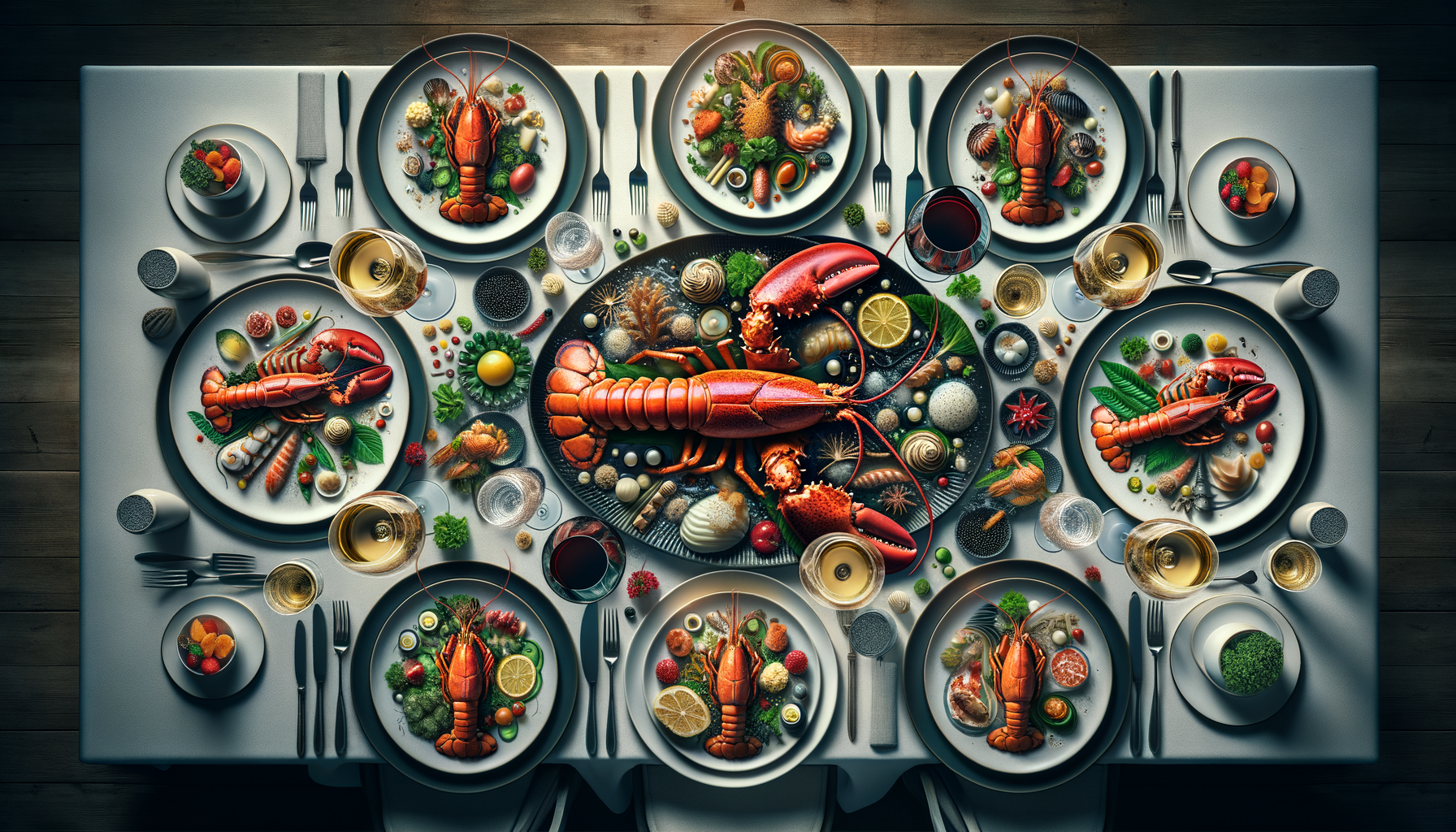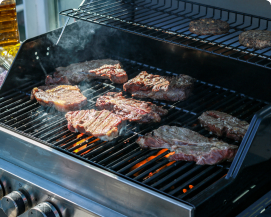Lobsters have long been considered a delicacy across various cultures, synonymous with opulence and indulgence. These marine crustaceans, once deemed the poor man’s chicken, have steadily climbed the social ladder to become a gourmet symbol. Their succulent meat is prized for its sweet, tender texture and rich flavor, making lobster dishes highly sought after in fine-dining establishments. In this article, we will dive into the luxurious world of lobster dishes, exploring their history, varieties, and the art of cooking them to perfection.
Understanding the Allure of Lobster
The lobster’s journey from the bottom of the ocean to a top-tier menu item is nothing short of remarkable. Historically, lobsters were so plentiful along the North Atlantic coast that they would wash ashore and be used as fertilizer or as a cheap food source for prisoners and servants. However, with the advent of railroads and improved transportation in the 19th century, lobsters began being shipped to urban areas, where they gained a reputation as an exotic treat.
What truly makes lobster a luxury is not just its delicious taste but also its rarity and the labor-intensive process of harvesting them. Lobster fishermen use specialized traps to catch these creatures, and strict regulations govern the sizes and quantities that may be caught to preserve the species and prevent overfishing.
Varieties of Lobsters and Their Unique Qualities
There are several types of lobsters, each with its own set of characteristics that influence their culinary value. The most commonly savored varieties are the American lobster (Homarus americanus), found in the North Atlantic Ocean, and the European lobster (Homarus gammarus), native to the eastern Atlantic Ocean.
American Lobsters:
Also known as Maine lobsters, these are distinguished by their large size and heavy claws, which are filled with tender meat. Their sweet, succulent flesh is especially prized, and they are often the go-to choice for classic dishes like lobster bisque and lobster rolls.
European Lobsters:
While similar to their American counterparts, European lobsters are generally smaller with a slightly more intense flavor. They are highly regarded in European cuisine and are a staple in Mediterranean dishes.
Spiny Lobsters:
Found in warm waters, such as the Caribbean and the Mediterranean, spiny lobsters, also known as rock lobsters, lack large, meaty claws. Instead, their value lies in the plentiful meat found in their tails, which is often grilled or used in dishes like salads and pasta.
The Culinary Journey of Lobster Dishes
Lobster dishes are celebrated not only for their flavors but also for the artistry and finesse that go into preparing them. Cooking lobster is a delicate process that requires timing and technique to bring out the best in its natural taste.
Boiling and Steaming:
The simplicity of boiling or steaming lobster allows its natural flavor to shine through. Boiling tends to cook the lobster more quickly, while steaming offers a gentler approach, keeping the meat tender. Both methods serve as a foundation for countless recipes or can be enjoyed with just a brush of melted butter.
Grilling:
For those who prefer a smoky flavor, grilling is an excellent choice. Grilled lobster tails that are marinated and cooked over an open flame have a bold taste that pairs well with robust seasonings and sauces.
Baking and Broiling:
Baking and broiling lobsters, often stuffed with a mixture of breadcrumbs, garlic, and herbs, create a luxurious dish that is flavorful and comforting. This method allows for a variety of creative culinary expressions.
Signature Lobster Dishes Around the World
While lobster can be enjoyed in its purest form, its versatility also makes it the star of many celebrated international dishes.
Lobster Thermidor:
This classic French dish involves creamy cooked lobster meat, egg yolks, and brandy, often stuffed back into a lobster shell and then browned in an oven. It’s a rich, decadent meal that’s become a symbol of French gastronomic luxury.
Lobster Roll:
A New England favorite, the lobster roll, highlights cold lobster meat dressed with mayonnaise or melted butter, served in a buttered, toasted roll. It is the perfect marriage of simplicity and indulgence.
Lobster Bisque:
A refined soup made from a stock of lobster shells, cream, and cognac or wine, lobster bisque is silky and sumptuous. It’s often served as a starter but is rich enough to stand as a meal on its own.
Lobster Curry:
Incorporating the bold flavors of South Asian cuisine, lobster curries are rich, aromatic, and full of depth. Coconut milk, an array of spices, and fresh herbs blend with the lobster to create a truly lavish dish.
Cooking Lobster at Home
While many reserve lobster for special occasions at high-end restaurants, cooking lobster at home can be an enjoyable and rewarding experience. The key is to start with fresh, high-quality lobster and to pay careful attention to cooking times to prevent overcooking, which can lead to tough meat.
Selecting the Best Lobster:
When buying lobster, look for lively specimens that show movement. The freshest lobsters will be active and responsive. If purchasing lobster tails, ensure that they are from a reputable source and that they have been adequately stored at the right temperature.
Prepping and Cooking:
Before cooking, lobsters should be cleaned and, if alive, humanely killed. To boil or steam a lobster, fill a large pot with salted water and bring it to a rolling boil. Carefully place the lobsters in the pot and cook for about 7-12 minutes, depending on their size. Tails will curl, and shells will turn a bright red when done.
Cooking Frozen Lobster Tails:
If you’re using frozen lobster tails, they should be thawed in the refrigerator for 24 hours before cooking. They can then be boiled, steamed, grilled, or broiled, with the cooking time adjusted accordingly.
Serving Suggestions:
Once cooked, lobsters can be served in a variety of ways. For a simple presentation, place a whole lobster on a plate with some melted butter, lemon wedges, and perhaps a sprinkle of herbs. Lobster meat can also be removed and used in pasta, salads, or as a filling for sandwiches and savory pastries.
Pairing Lobster with Wine and Sides
To elevate your lobster dining experience, it’s important to pair it with the right wine and sides. White wines, such as Chardonnay, Sauvignon Blanc, or a dry Riesling, complement the sweetness of the lobster meat without overpowering it.
As for sides, aim for balance and simplicity. A fresh garden salad, steamed asparagus, or a side of creamy risotto can enhance the lobster’s luxurious feel while maintaining a sense of elegance and lightness.
Finishing Thoughts
The world of lobster dishes is rich with history, flavor, and culinary craftsmanship. Whether enjoyed in a simple seaside shack or an opulent city restaurant, lobster continues to fascinate and delight food enthusiasts everywhere. From selecting the finest lobster to mastering the cooking process and choosing the perfect accompaniments, creating a luxurious lobster meal is an art form that celebrates the very best of what the sea has to offer. Enjoying a well-prepared lobster dish is not just about the act of eating; it’s a sensory and memorable experience that encompasses taste, tradition, and the joy of indulgence.“`html
Frequently Asked Questions
What are the most popular lobster dishes?
The most popular lobster dishes vary globally, but some universal favorites include Lobster Thermidor, Lobster Bisque, Lobster Rolls, Grilled or Steamed Lobster with Butter, Lobster Risotto, and Lobster Mac and Cheese.
How can I ensure I’m cooking lobster properly?
To ensure proper lobster cooking, start by selecting live, active lobsters. Steam or boil lobsters by submerging them in salted water for about 12-15 minutes for a 1 to 1 1/4 pound lobster. The shell should be bright red and the meat opaque when adequately cooked. Overcooking can result in tough meat, so timing is crucial.
What are the health benefits of eating lobster?
Lobster is not only delicious but nutritious as well. It’s a great source of protein and omega-3 fatty acids, which are beneficial for heart health. Lobster also contains vitamins and minerals such as vitamin B12, zinc, selenium, phosphorus, and magnesium. However, it’s high in cholesterol and should be enjoyed in moderation.
How do I crack and eat a lobster?
To crack a lobster, start by twisting off the claws and knuckles. Use a lobster cracker to break the claws and extract the meat. For the tail, squeeze the sides of the tail together to crack the shell, then push the meat out from one end. The legs can also be eaten by sucking out the meat. Always have napkins or hand wipes nearby as eating lobster can be messy.
What is the difference between Maine lobster and spiny lobster?
Maine lobsters, also known as American lobsters, have large claws with sweet, tender meat, while spiny lobsters, prevalent in warm waters, do not have claws and offer a different texture and a slightly spicier flavor. The main meat of a spiny lobster is found in its tail.
Can I make lobster dishes ahead of time?
Some lobster dishes can be prepared ahead of time like Lobster Bisque or Lobster Thermidor. However, dishes like boiled or steamed lobster are best served fresh. For lobster rolls, you can prepare the lobster meat and sauce separately and assemble them just before serving to maintain the best quality.
What wine pairs best with lobster?
Light-bodied white wines such as Chardonnay, Sauvignon Blanc, or Pinot Grigio pair well with lobster dishes due to their ability to complement the lobster’s sweetness without overpowering its delicate flavor. For creamy lobster dishes, an oaky Chardonnay can be an excellent choice.
Is it possible to overcook lobster and what are the signs?
Yes, it is possible to overcook lobster, and the signs include rubbery, tough meat, and sometimes a curled body. It’s important to follow cooking times closely and to check the lobster’s color and meat texture to avoid overcooking.
Are there any ethical concerns with eating lobster?
Some people have ethical concerns with eating lobster due to the traditional method of cooking them alive. There are debates about whether lobsters feel pain. Ensuring lobsters are sourced from sustainable fisheries that follow humane practices can help address some of these concerns.
What is the “tomalley” in a lobster, and can you eat it?
The “tomalley” is the green substance found in the lobster’s body cavity, which serves as the liver and pancreas. Some people consider it a delicacy, while others choose to discard it. It is generally safe to eat, but since it’s a filtering organ, it can contain toxins and should be consumed sparingly.
“`













